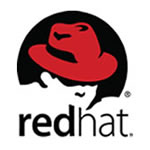
By now, everyone has heard about the largest software company transaction in history. IBM, the world's ninth-largest information technology company (by revenue), is paying $34 billion to acquire Red Hat, the North Carolina company credited with popularizing Linux — the open source operating system (OS) and, more recently, all kinds of open source hybrid cloud computing infrastructure.
Celebrating their silver anniversary (25 years) in 2018, Red Hat's mission is simple: making enterprise software using an open source development model.
You might have a passing familiarity with the term "open source," but still be scratching your head right now. "Huh? Doesn't that mean the software is free? How does anyone make money selling something that's free?"
Well, yes and no.
What is Open Source?
- First, open source means you have free access to the source code, the raw programming instructions of whatever software we're talking about — operating system, database, even (gasp) a business application like enterprise resource planning (ERP).
- Second, that there is an "open source" version of the software available under a license certified by the Open Source Initiative, with no requirement to pay a fee for that license.
There are thousands of active open source projects around the world, where smart people voluntarily band together to work on software that solves their own needs. Some of those people are working as individuals; others are working on behalf of their employers. Many companies devote enormous engineering resources to open source projects that support their own business goals — some obvious ones are technology giants such as Google, Amazon, Apple and Microsoft. Some surprising ones are xTuple's own customers, in businesses as varied as metals manufacturing, building supplies and food production. All of those people work together to make the software better — drawing on their own business expertise, and, not insignificantly, experience with other software packages.
At xTuple, we call it "Collective Brainpower."
Over the years, companies have built many different business models around open source software.
Paul Cormier, executive vice president and president of Red Hat Products and Technologies, gives a good history of his own company, "A monumental day for open source and Red Hat."
You can read about xTuple's own story: History of xTuple.
The common thread here is building a commercial product and service offering, laser-focused on commercial customers, that leverages (and continues to contribute to) the core open source offering. In Red Hat's case, they started off as one of many distributors of an operating system originally created by a student named Linus Torvalds.
In our case, we made the conscious decision to make the core of our own ERP software — which we created ourselves — freely avaliable as open source software. And today we continue to develop that core, including some major new features coming in the game-changing version 5.0 later this year. But, we make our living from the customers that license our commercial editions of xTuple ERP, including advanced systems for Distribution, Manufacturing, and the full Enterprise, including a customer-facing Web Portal.
With annual revenues approaching $3 billion, Red Hat has been a phenomenally successful company — focused on leveraging its leadership in key open source software projects to delivering cost-effective solutions for large enterprises with complex IT needs. Those customers previously depended on traditional enterprise software and hardware vendors, with closed systems and punitive licensing and pricing structures.
Today, Red Hat customers are able to move quickly to experiment with different technologies, deploy in whatever mix of cloud and on-site makes sense for their business, and rely on Red Hat as a trusted partner to support their ever-expanding technology initiatives. That's what IBM is buying, and from where I sit, it looks like a smart move.
